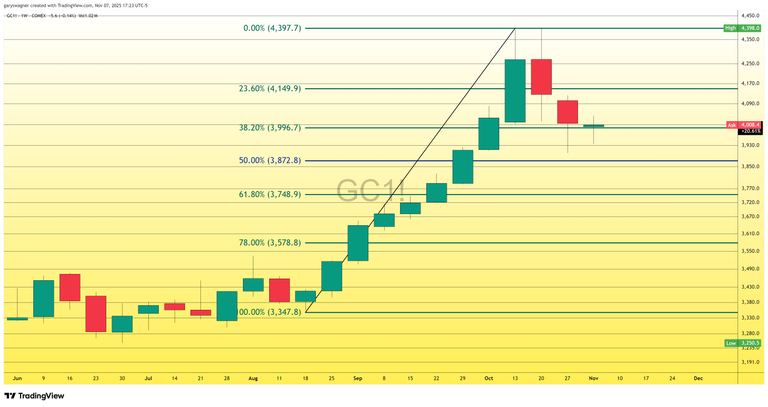Gold and silver concluded the trading week essentially unchanged despite intraday volatility, as investors weighed conflicting signals from deteriorating labor market conditions against cautious messaging from Federal Reserve officials regarding the future path of monetary policy.
Both precious metals posted moderate gains in Friday's session, with gold futures advancing $27, or 0.68%, to close back above the psychologically significant $4,000 threshold at $4,012. Silver futures demonstrated slightly stronger relative performance, gaining $0.44, or 0.92%, to settle back above $48 at $48.28. However, these Friday gains proved insufficient to materially alter the metals' positioning for the week as a whole, with both finishing near their starting levels.
The week's price action reflected the complex crosscurrents currently influencing precious metals markets. Gold traded near $3,987 per ounce for much of Friday's session, having recovered from losses in the previous day to finish little changed. This stabilization occurred against a backdrop of significant movement in fixed-income markets, where yields on 10-year Treasury notes experienced their sharpest decline in approximately one month following the release of deeply concerning employment data.

The catalyst for the Treasury market's response came from outplacement consulting firm Challenger, Gray & Christmas Inc., which reported that October job cuts reached their highest level in more than two decades. This alarming labor market deterioration would typically be interpreted as unambiguously supportive for gold prices, as weaker employment conditions strengthen the case for additional Federal Reserve rate cuts—a scenario that enhances the appeal of non-yielding assets like bullion by reducing the opportunity cost of holding them relative to interest-bearing alternatives.
However, the straightforward bullish interpretation was complicated by remarks from Chicago Federal Reserve President Austan Goolsbee, whose comments effectively tempered market expectations for aggressive monetary easing. Goolsbee expressed heightened concern about the central bank's ability to assess economic conditions accurately during the current environment, noting that the absence of official inflation data during the U.S. government shutdown left him "even more uneasy" about the wisdom of continuing to reduce borrowing costs. This candid acknowledgment of uncertainty introduced a note of caution into rate-cut expectations that had been building in response to the weak employment figures.
The result of these competing forces was a precious metals market characterized by equilibrium rather than directional conviction. Traders found themselves balancing the dovish implications of deteriorating labor conditions against the more hawkish tone struck by at least one influential Fed policymaker, with neither narrative achieving sufficient dominance to drive sustained price movement. This dynamic produced the week's essentially flat finish, suggesting that markets remain in a wait-and-see posture as they attempt to discern whether economic weakness or central bank caution will ultimately prove the more powerful force shaping the monetary policy outlook—and by extension, the trajectory of precious metals prices.
For those that would like more information about our services click here
Wishing you as always good trading,

